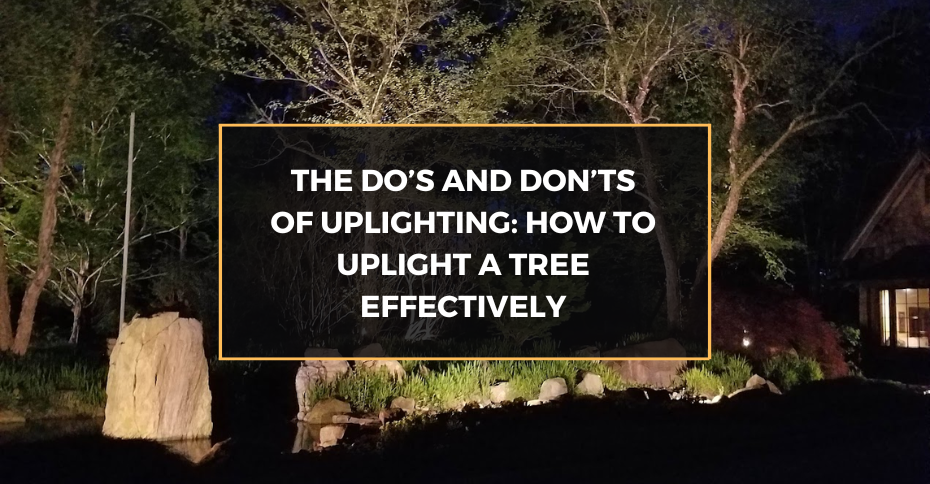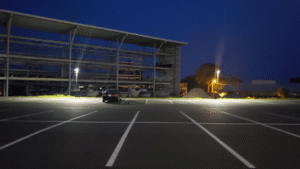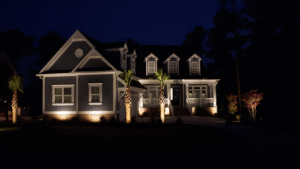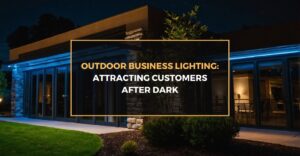Uplighting a tree is a sophisticated and effective method to enhance the aesthetic appeal and functionality of outdoor landscapes. This lighting technique not only highlights the natural beauty and structure of trees but also contributes to the creation of a captivating and welcoming outdoor environment. Through strategic placement and selection of lighting fixtures, uplighting can transform ordinary gardens into extraordinary nightscapes, enriching the visual appeal of properties while enhancing safety and security.
Understanding Uplighting
Uplighting is a technique that involves placing lights on the ground, angled upward to illuminate trees, showcasing their branches and leaves against the night sky. This method can transform an ordinary garden into a magical nighttime landscape, highlighting the natural beauty of trees. Uplighting offers a dramatic yet subtle way to enhance the aesthetic appeal of outdoor spaces, creating an inviting atmosphere. It’s essential to select appropriate fixtures and positions to uplight a tree effectively, without causing harm or light pollution.
Benefits of Uplighting Trees
Uplighting trees not only enhances the beauty of the landscape but also increases property value and security. It allows for the architectural features of trees to be appreciated during the nighttime, providing depth and structure to garden designs. Effective uplighting can create a serene and inviting outdoor space, perfect for evening gatherings. Additionally, by choosing energy-efficient LED lights to uplight a tree, homeowners can enjoy these benefits without significantly increasing energy costs. Strategic uplighting can also ensure safe walkways and deter potential intruders, making it a multifaceted investment in the property’s appeal and security.
The Do’s of Uplighting Trees
Uplighting trees, when executed with precision and artistic insight, can transform the ordinary into the extraordinary.
Choosing the Right Light Fixtures
When selecting fixtures to uplight a tree, it’s crucial to choose durable, weather-resistant options designed for outdoor use. LED fixtures are often recommended for their longevity, energy efficiency, and minimal heat output. The beam spread of the light should be considered to ensure it complements the tree’s size and shape. For larger trees, wider beam spreads can illuminate more of the canopy, while narrower beams are ideal for highlighting specific features. Using the right fixtures will not only enhance the beauty of the tree but also ensure the lighting system is sustainable and cost-effective.
Optimizing Light Intensity and Color
The intensity and color of light play significant roles in how effectively you can uplight a tree. Soft, warm white light is usually preferred for its natural appearance and ability to create a welcoming atmosphere. However, for dramatic effects, cooler tones or even colored lights might be used sparingly. It’s important to adjust the intensity of the lights to avoid overpowering glare or underwhelming illumination. Dimmable LED lights offer flexibility, allowing adjustments to suit different occasions or preferences. By optimizing these elements, one can achieve a balanced and aesthetically pleasing uplighting effect.
Correct Placement for Maximum Effect
To uplight a tree effectively, the placement of light fixtures is key. Lights should be positioned at various angles and distances from the tree to highlight its structure and texture without casting harsh shadows. For tall trees, placing lights farther away with a tilted angle can illuminate the upper branches more evenly. It’s crucial to avoid placing lights in a way that could damage the tree’s roots or block natural growth. Experimenting with different placements can help achieve the desired lighting effect while ensuring the tree remains healthy and vibrant.
The Don’ts of Uplighting Trees
Navigating the pitfalls of uplighting trees is essential for achieving a landscape that resonates with beauty.
Avoiding Light Pollution
One of the critical considerations when planning to uplight a tree is to minimize light pollution. This involves directing lights so they illuminate the trees without spilling over into neighboring properties or the night sky. Using fixtures with shields or opting for lower-intensity lights can help contain the light within the desired area. It’s also important to consider the color temperature of the lights, as warmer hues tend to be less disruptive to the natural environment. By taking these steps, homeowners can enjoy the benefits of uplighting without contributing to light pollution.
Preventing Damage to Trees
While uplighting can significantly enhance a tree’s appearance, it’s essential to implement this technique without harming the tree. Avoid attaching fixtures directly to the tree or disturbing the root system during installation. Use wireless lights or carefully plan cable routes to minimize impact. Additionally, ensuring that lights do not generate excessive heat can prevent damage to the tree’s bark and leaves. Regular maintenance checks can help identify and mitigate any potential issues early on, preserving the tree’s health alongside its illuminated beauty.
Steering Clear of Common Mistakes
Common mistakes in uplighting trees include using too many lights, creating a cluttered or overly bright effect, and neglecting the natural shape and features of the trees. Overlooking the impact of seasonal changes on the lighting setup can also lead to suboptimal illumination at different times of the year. To avoid these pitfalls, it’s advisable to start with a minimalist approach, gradually adding more lights if necessary, and to consider the tree’s growth and changes throughout the seasons. This approach ensures that the uplighting enhances rather than detracts from the natural beauty of the landscape.
Advanced Tips To Uplight a Tree
Beyond basic techniques lies a sophisticated understanding of how light interacts with different tree species, forms, and textures, offering a nuanced approach to designing illuminated spaces.
Working with Different Tree Types
Different tree types may require unique uplighting strategies to highlight their best features. Deciduous trees, with their changing foliage, offer opportunities to adjust lighting with the seasons, while evergreens provide a constant backdrop that can be reliably illuminated year-round. Considering the tree’s shape, size, and leaf density can guide the selection of appropriate fixtures and placement. For instance, trees with dense foliage might benefit from stronger lights placed at a distance to penetrate the canopy, while slender, architectural trees may need more focused lighting to delineate their shapes.
Integrating with Overall Landscape Lighting
Uplighting trees should be part of a comprehensive landscape lighting plan that considers pathways, architectural features, and other garden elements. This holistic approach ensures that the lighting is cohesive and balanced, without any area being over- or under-emphasized. Integrating uplighting with other lighting types can create layers of illumination, adding depth and texture to the outdoor space. Considering the overall design and how each element interacts allows for a harmonious and dynamic nighttime landscape.
Why Choose Prestige Outdoor Lighting for Professional Tree Uplighting
Prestige Outdoor Lighting specializes in transforming outdoor spaces into enchanting nightscapes, with expert uplighting techniques that highlight the natural beauty of trees. Our commitment to quality, sustainability, and innovation ensures that each project we undertake is tailored to meet our clients’ specific needs and visions. By choosing Prestige Outdoor Lighting, homeowners can benefit from our extensive experience and dedication to excellence, resulting in stunning, efficient, and environmentally responsible lighting solutions. Whether it’s showcasing a single, majestic tree or integrating uplighting into a comprehensive landscape design, our team delivers results that exceed expectations, making us the preferred choice for professional tree uplighting.
FAQs
What is the optimal number of lights to uplight a tree without overdoing it?
The optimal number of lights depends on the tree’s size and shape. Start with a minimal setup and increase as needed to highlight the tree’s features without creating a cluttered effect.Are there specific LED colors recommended to uplight a tree?
Warm white LEDs are generally recommended for a natural and inviting look. However, for dramatic effects, cooler tones or colored LEDs can be used sparingly.How can I uplight a tree without interfering with its natural growth?
Ensure lights are placed in a manner that doesn’t obstruct growth, avoid attaching fixtures to the tree, and periodically adjust the setup as the tree grows.How do I choose the right angle to uplight a tree for the best effect?
Experiment with different angles to highlight the tree’s best features. A combination of angles can showcase the tree’s structure and texture without casting harsh shadows.What considerations should be made for uplighting trees in coastal areas?
In coastal areas, select fixtures that are corrosion-resistant and can withstand harsh weather conditions, such as salt spray and high winds.







